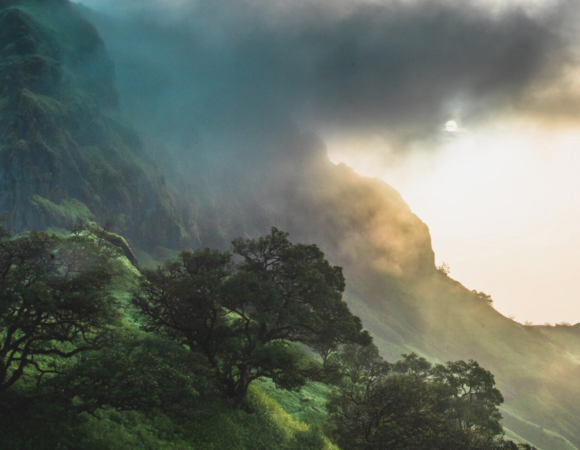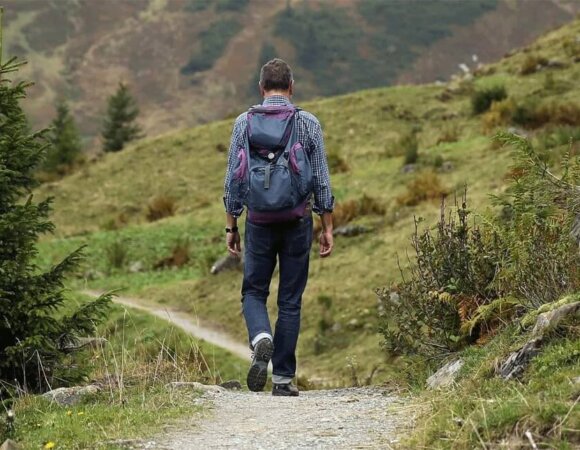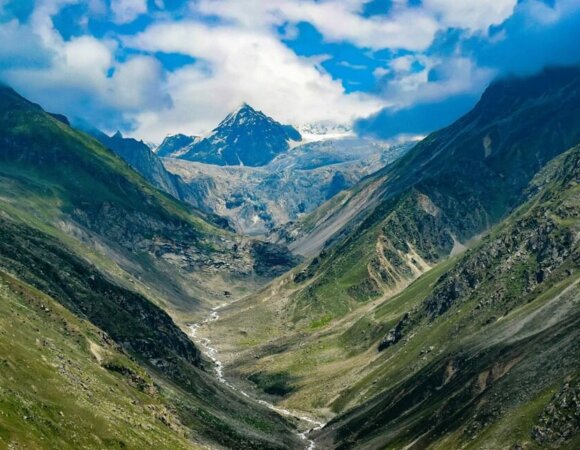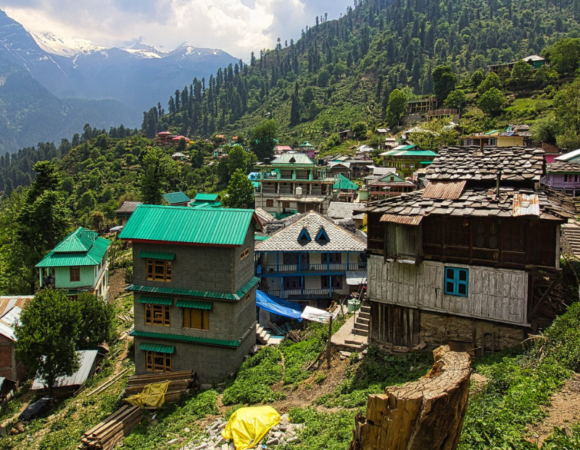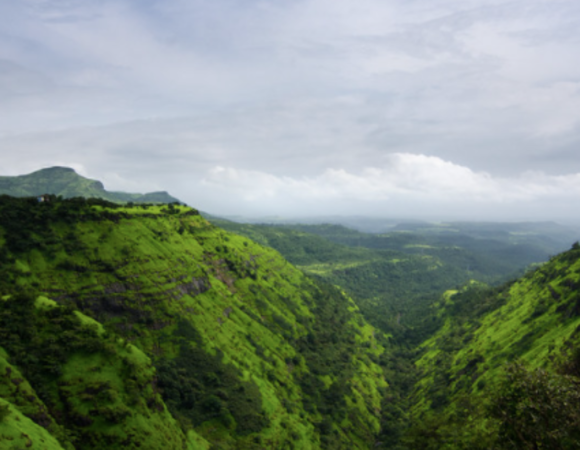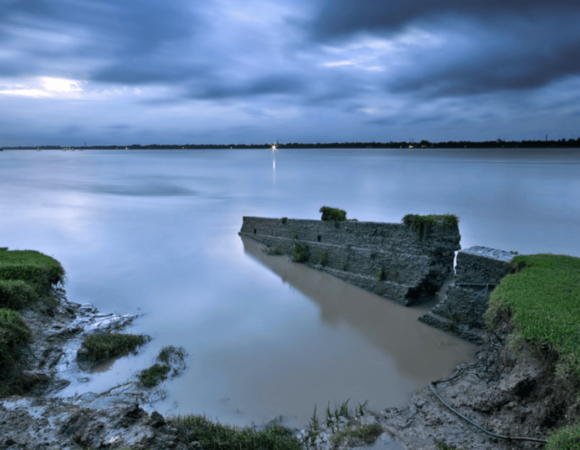Best Places to Visit in Sainj Valley: Your Ultimate Travel Guide
Sainj Valley beckons with pristine meadows, ancient temples, and untouched wilderness. Discover the 12 best places to visit in Sainj Valley with our detailed travel guide.
Table of Contents
ToggleImagine a place where time stands still, where ancient temples whisper stories of forgotten legends, and where emerald meadows stretch endlessly toward snow-capped peaks. Welcome to Sainj Valley, one of Himachal Pradesh’s most incredible untouched gems that remains blissfully undiscovered by mainstream tourism.

Nestled within the Great Himalayan National Park, this pristine valley offers everything that crowded destinations like Manali and Kasol have lost to commercialization. Here, you won’t find honking cars, neon signs, or tourist traps. Instead, you’ll discover authentic mountain culture, breathtaking natural beauty, and a peace so profound it changes you.
Unlike the bustling hill stations that have surrendered their soul to development, Sainj Valley preserves the magic that originally drew people to the mountains. Every village tells a story, every trail leads to wonder, and every sunrise reveals landscapes that seem painted by divine hands.
Ready to explore paradise? Let’s journey through the 12 best places to visit in Sainj Valley, each offering unique experiences that will make your trip unforgettable.
Best Places to Visit in Sainj Valley
1. Shangarh Meadows
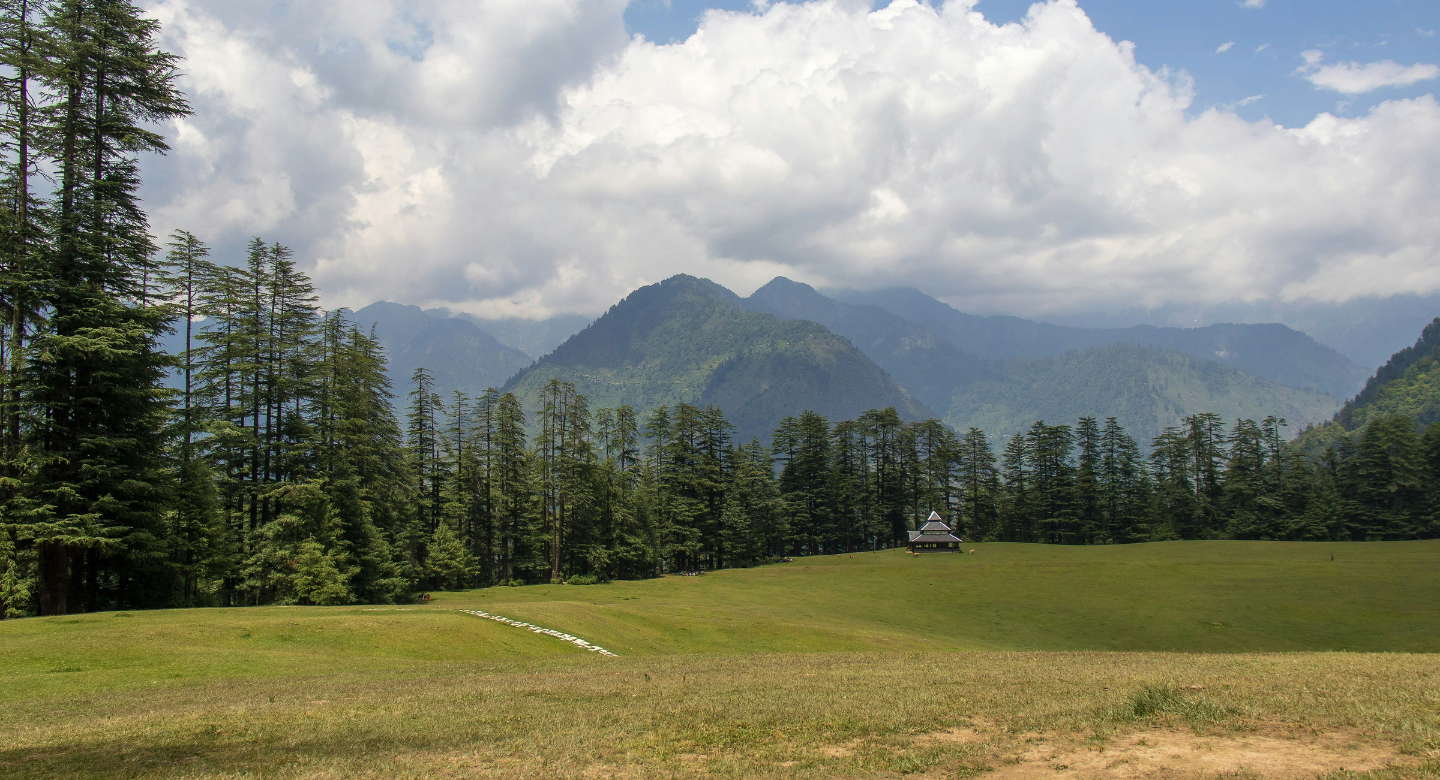
Shangarh Meadows represent the very heart of Sainj Valley’s natural beauty. These vast alpine grasslands stretch like a green ocean, surrounded by dense forests and towering Himalayan peaks that seem to touch the sky.
The meadows change character with the seasons. Spring brings wildflowers that carpet the grass in brilliant colors. Summer sees lush green expanses perfect for camping and picnics. Autumn paints everything in golden hues that glow in the mountain light. Even winter has its charm, with snow creating a pristine white landscape.
These meadows offer some of the best camping experiences in the region. Imagine falling asleep under a canopy of stars so bright they seem within reach, then waking to sunrise painting the surrounding peaks in shades of pink and gold. The area provides easy walks suitable for families, while also serving as a base for more challenging adventures.
Photography enthusiasts will find endless subjects here, from sweeping landscape vistas to intimate wildflower details. The meadows also offer excellent opportunities for meditation and yoga, with the peaceful atmosphere helping you disconnect from daily stress.
2. Shangchul Mahadev Temple

Standing guard over the beautiful Shangarh Meadows, the ancient Shangchul Mahadev Temple holds a special place in local hearts and Hindu mythology. This sacred site dedicated to Lord Shiva has been protecting the valley for over a thousand years, according to local legends.
The temple’s architecture reflects traditional Himalayan building styles, with stone walls and wooden elements that have weathered centuries of mountain weather. Despite its simple appearance, the spiritual energy here is incredibly powerful. Many visitors describe feeling a deep sense of peace and connection the moment they enter the temple grounds.
Local stories say that Lord Shiva himself chose this spot for meditation, drawn by the valley’s pristine beauty and spiritual energy. The temple serves as a pilgrimage site for devotees from across the region, especially during important Hindu festivals when the area comes alive with chanting, music, and traditional celebrations.
The views from the temple are absolutely spectacular, with the meadows spreading out below and snow-capped peaks rising in every direction. Many visitors combine temple visits with meadow exploration, making it a perfect spiritual and natural experience.
3. Pundrik Rishi Lake
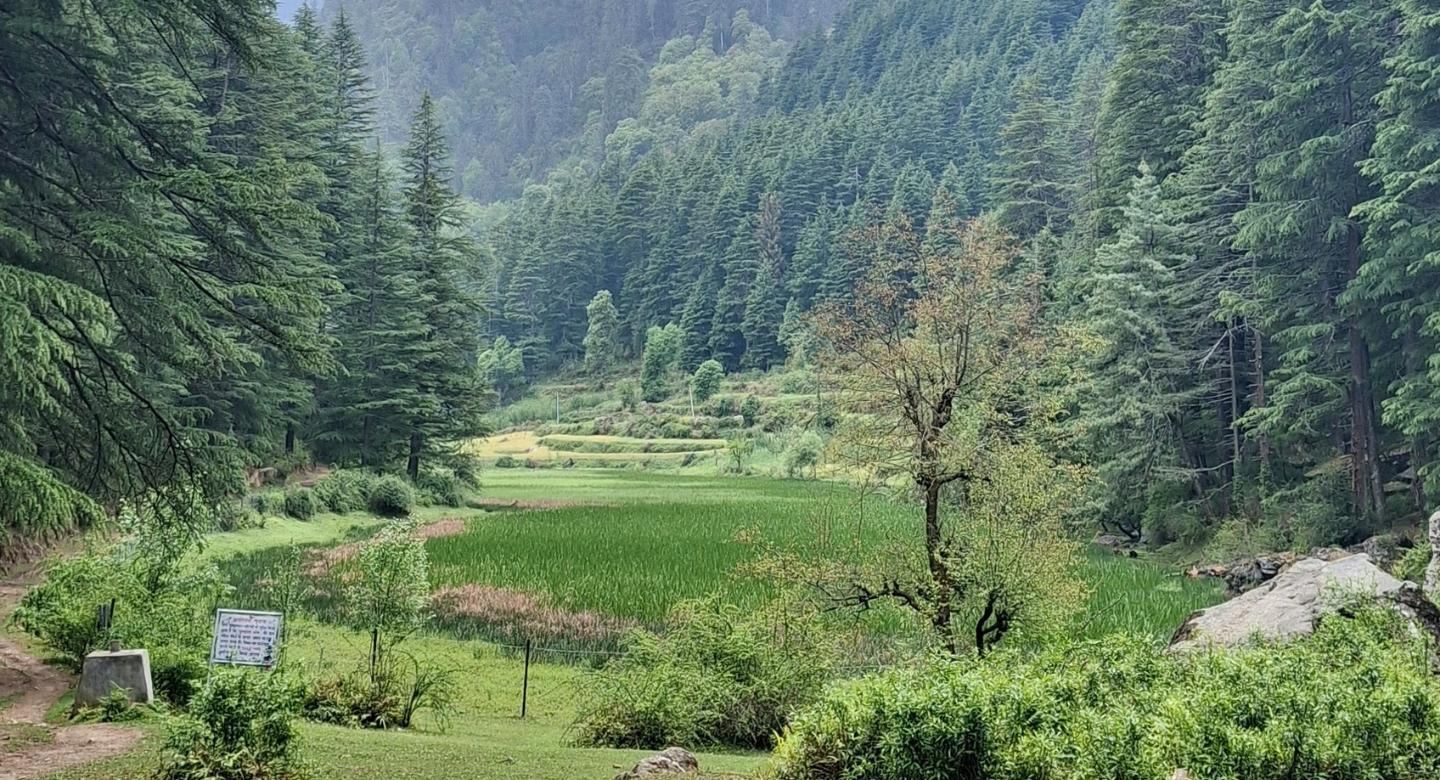
Hidden deep within dense forest, Pundrik Rishi Lake is one of Sainj Valley’s most mysterious and sacred destinations. This pristine alpine lake is named after the sage Pundrik, who is believed to have meditated in this exact spot centuries ago, drawn by its incredible spiritual energy.
The trek to reach the lake is an adventure in itself, taking you through some of the most beautiful forest terrain in the region. The trail winds through ancient oak, deodar, and rhododendron trees, with occasional clearings offering glimpses of distant peaks. The forest is alive with birdsong and the gentle sounds of hidden streams.
The lake itself is relatively small but incredibly beautiful, with crystal-clear water that perfectly reflects the surrounding forest canopy. Local people consider it sacred and often make pilgrimages here to offer prayers and seek blessings. The atmosphere is so peaceful that even non-religious visitors often find themselves moved by the spiritual ambiance.
The trek takes about 3-4 hours each way and is moderately challenging, with some steep sections and rocky terrain. The best times to visit are spring and autumn when the weather is stable and the forest is at its most beautiful. Remember to carry water, snacks, and a camera to capture the incredible scenery along the way.
4. Deohari Village
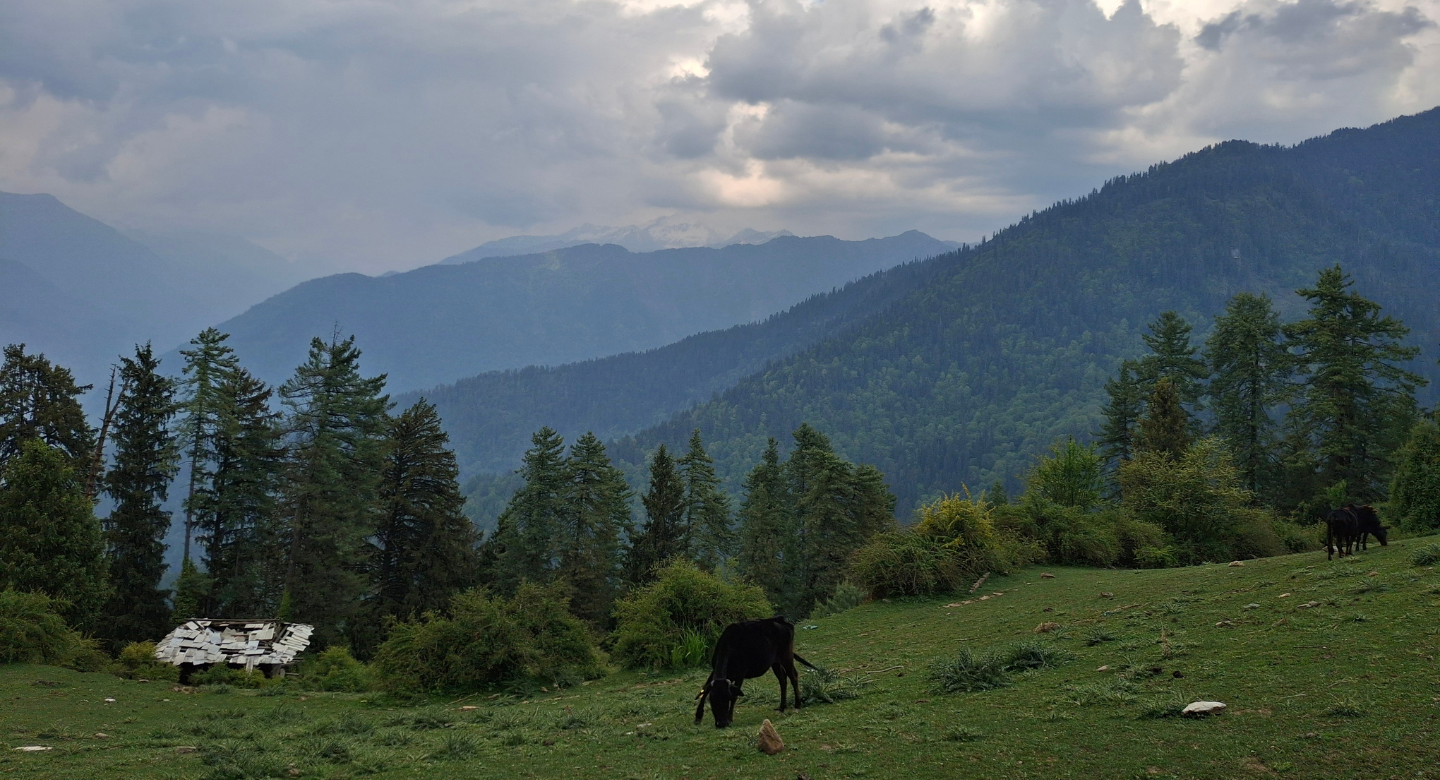
Deohari Village perfectly captures the authentic charm of traditional Himalayan life. Built on terraced hillsides, this picturesque settlement showcases architecture that has remained unchanged for generations, with houses constructed from local stone and timber using age-old techniques.
Walking through Deohari feels like stepping back in time. Narrow stone paths wind between houses, leading to small terraced fields where villagers grow potatoes, barley, and vegetables. The community here lives in harmony with nature, following sustainable practices that their ancestors developed over centuries.
The village offers incredible insights into mountain culture. Families here maintain traditional crafts, prepare food using time-honored recipes, and celebrate festivals that connect them to their ancient roots. Visitors often get invited to share meals and stories, experiencing genuine Himalayan hospitality that warms the heart.
The views from Deohari are stunning, with the village perched at an elevation that provides panoramic vistas of surrounding valleys and peaks. The area around the village offers easy walks through terraced fields and small forests, perfect for those who want to experience mountain life without challenging treks.
5. Devi Navdurga Temple

The Devi Navdurga Temple in Deohari Village stands as a masterpiece of traditional Himalayan architecture and spiritual artistry. This ancient temple dedicated to Goddess Durga is famous throughout the region for its intricate wooden carvings and unique architectural style that reflects centuries of local craftsmanship.
Every surface of the temple tells a story through detailed carvings that depict scenes from Hindu mythology. Local artisans spent years creating these masterpieces using traditional tools and techniques passed down through generations. The wooden pillars, walls, and ceiling are covered with artwork so detailed that you could spend hours studying the individual scenes.
The temple’s spiritual energy is palpable, with devotees coming from far and wide to seek the goddess’s blessings. During festivals, the temple comes alive with music, chanting, and traditional ceremonies that showcase the rich cultural heritage of the region. The main festivals see hundreds of locals gathering to celebrate with traditional dance, music, and community feasts.
What makes this temple special is not just its artistic beauty but also its role as a community center. It serves as a gathering place where villagers discuss important matters, celebrate life events, and maintain their cultural connections. Visiting during festival times provides incredible insights into local traditions and community spirit.
6. Shenshar Village

Perched high on a mountainside like an eagle’s nest, Shenshar Village offers some of the most spectacular panoramic views in all of Sainj Valley. This tiny hamlet of fewer than 50 families feels like it’s suspended between earth and sky, with clouds often drifting past at eye level.
Life in Shenshar moves at nature’s pace. There’s no mobile network, no traffic noise, and no commercial activity – just the pure sounds of wind through pine trees and distant bird calls. The village represents the ultimate escape from modern life’s pressures, offering a digital detox that helps you rediscover what really matters.
The houses in Shenshar are scattered across steep slopes, connected by narrow stone paths that wind between terraced fields. Families here grow their own food, raise livestock, and maintain traditions that have sustained mountain communities for centuries. The self-sufficient lifestyle demonstrates sustainable living practices that the modern world could learn from.
The views from Shenshar are absolutely breathtaking, with multiple mountain ranges stretching to the horizon. On clear days, you can see peaks extending toward Tibet. Sunrise and sunset from the village are particularly magical, with the entire landscape painted in shades of gold, pink, and purple.
7. Manu Rishi Temple
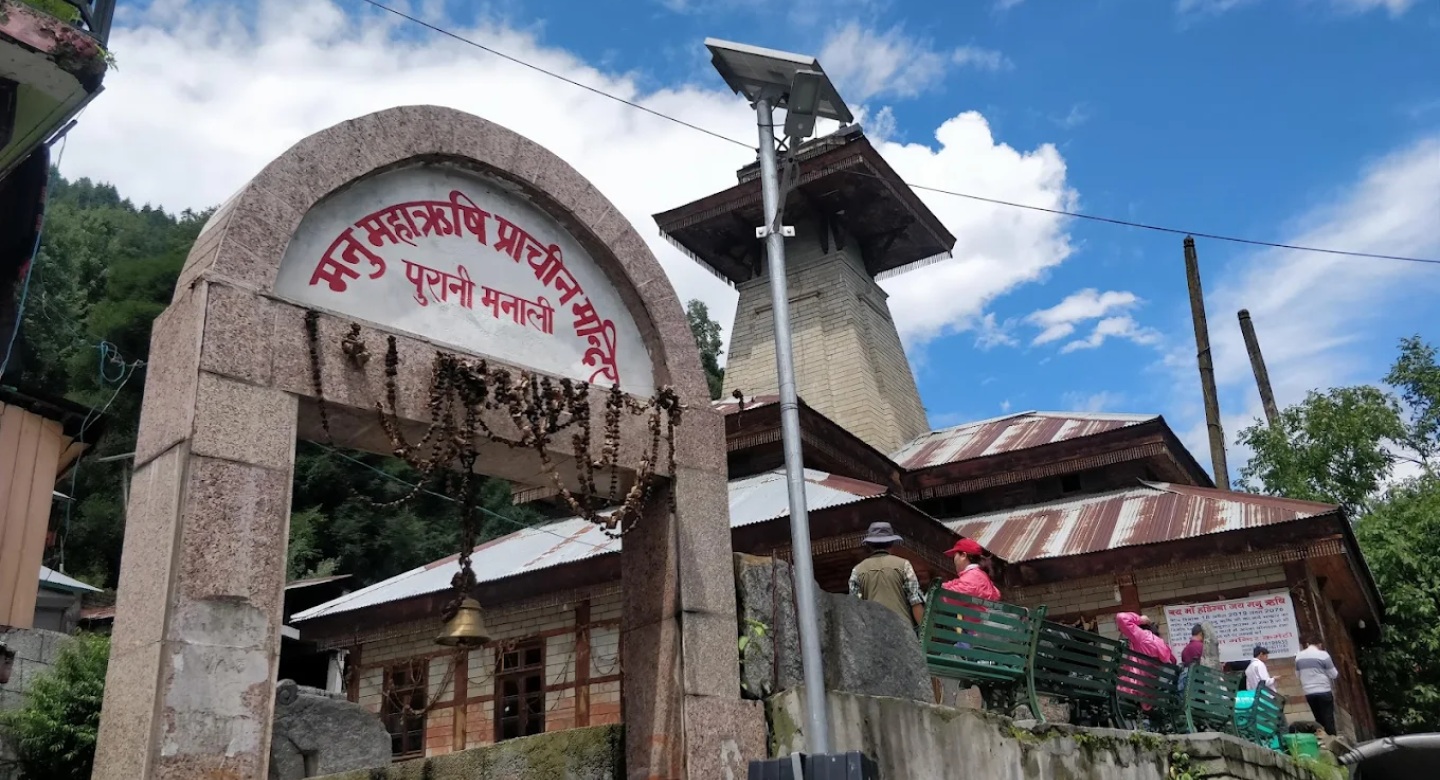
The Manu Rishi Temple in Shenshar Village holds a special place in Hindu mythology as the meditation site of Sage Manu, who is considered the father of humanity in Hindu tradition. According to ancient stories, Manu chose this remote location for its incredible spiritual energy and connection to the divine.
The temple itself is beautifully simple, built from local stone with traditional architectural elements that blend harmoniously with the mountain environment. Prayer flags flutter in the mountain breeze, adding splashes of color against the dramatic backdrop of snow-capped peaks and deep valleys.
What makes this temple extraordinary is its setting and the legends surrounding it. Local stories tell of Manu meditating here for years, drawing spiritual power from the mountain environment. The temple serves as a pilgrimage destination for those seeking spiritual growth and connection with ancient wisdom.
The peaceful atmosphere around the temple is perfect for meditation and quiet reflection. Many visitors spend hours here, drawn by the combination of spiritual energy and natural beauty. The temple offers a unique opportunity to connect with both Hindu tradition and the profound silence of high mountain environments.
8. Upper Neahi Village
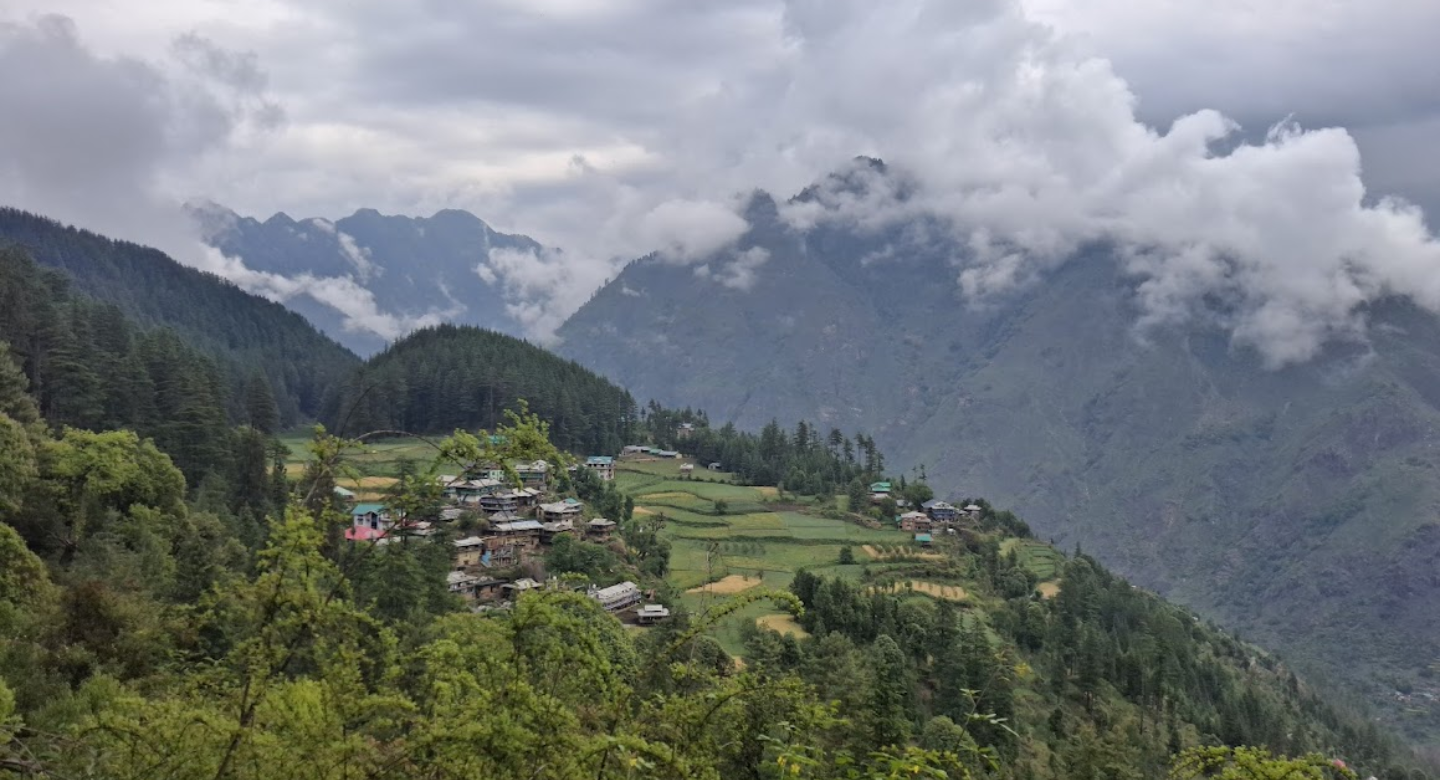
Upper Neahi Village offers the ultimate escape from the connected world, sitting in a location so remote that mobile networks can’t reach it. This isolation isn’t a drawback – it’s the village’s greatest gift, forcing visitors to slow down and rediscover the simple pleasures of life without digital distractions.
The village clings to steep mountainsides, with houses scattered across terraces carved from the natural slope. Stone paths connect the homes, winding through small gardens where families grow vegetables and herbs using organic methods passed down through generations. The architecture reflects centuries of adaptation to harsh mountain conditions.
Life here revolves around agriculture and animal husbandry, with families raising sheep, goats, and yaks while cultivating hardy crops suited to high-altitude conditions. The community works together during planting and harvest seasons, maintaining social bonds that urban life often lacks.
Staying in Upper Neahi provides authentic insights into sustainable mountain living. You’ll learn about traditional farming techniques, natural building methods, and community cooperation systems that have sustained these villages for centuries. The experience often leaves visitors with a new appreciation for simple living and environmental harmony.
9. Sari Kanda Peak

Rising majestically near Upper Neahi Village, Sari Kanda Peak offers one of the most rewarding hiking experiences in Sainj Valley. This prominent mountain provides a challenging but achievable climb that rewards hikers with 360-degree views of the Great Himalayan National Park and beyond.
The climb to Sari Kanda’s summit is steep and demanding, requiring good fitness and proper preparation. However, the trail is well-defined and safe for experienced hikers. As you climb higher, the vegetation changes from dense forest to alpine meadows, finally giving way to rocky terrain near the summit.
From the top, the views are absolutely spectacular. On clear days, you can see multiple mountain ranges stretching toward Tibet, with the Great Himalayan National Park spread out below like a green carpet. The sense of achievement from reaching the summit, combined with the incredible vistas, makes this one of the most memorable experiences in the valley.
The best time to attempt Sari Kanda is during spring and autumn when weather conditions are most stable. Early morning starts are recommended to avoid afternoon weather changes common in high mountain areas. The descent requires careful attention, as loose rocks can make the trail slippery.
10. Raktisar Trek

The Raktisar Trek stands as one of Sainj Valley’s most challenging and rewarding adventures, leading intrepid trekkers to the very source of the Sainj River through some of the most pristine wilderness in the Indian Himalayas. This demanding trek is not for beginners, but experienced hikers find it absolutely unforgettable.
The trail takes you through multiple ecological zones, starting in temperate forests filled with oak and deodar trees, climbing through rhododendron groves, and finally reaching high-altitude alpine terrain where only the hardiest plants survive. Each zone offers different wildlife viewing opportunities and unique photographic subjects.
Wildlife encounters are a major highlight of the Raktisar Trek. The route passes through habitats where you might spot snow leopards, brown bears, blue sheep, and various Himalayan bird species. The biodiversity here represents some of the richest ecosystems in the Indian subcontinent, with many species found nowhere else.
The trek requires excellent physical fitness, proper equipment, and experienced local guides. You’ll need camping gear for multiple nights in the wilderness, warm clothing for high-altitude conditions, and enough supplies for several days away from civilization. The best season for this trek is late spring through early autumn when weather conditions are most stable.
11. Jiwa Nala Trek
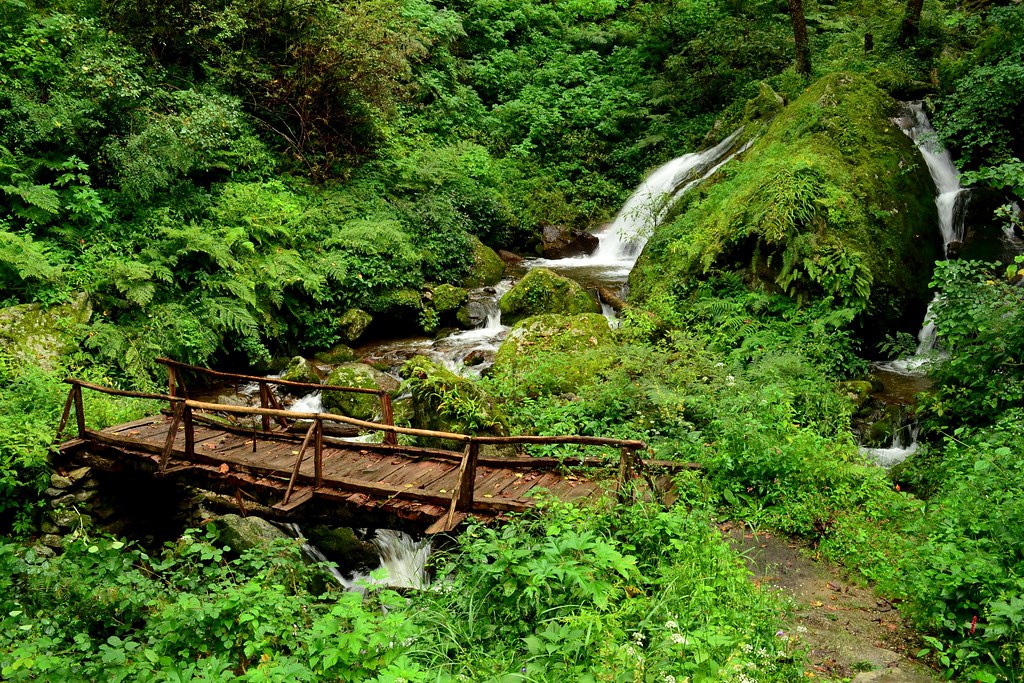
The Jiwa Nala Trek offers a unique cross-valley adventure that connects Sainj Valley with the famous Parvati Valley through ancient forest trails once used by local traders and pilgrims. This moderate trek provides an excellent introduction to multi-day Himalayan trekking while showcasing incredible ecological diversity.
The trail follows traditional trade routes that connected different valleys for centuries. Along the way, you’ll see remnants of old rest stops, ancient carved stones, and traditional bridges that tell stories of the region’s rich history. Local guides often share fascinating tales about the people who traveled these paths in bygone eras.
The changing landscapes keep the journey interesting throughout the 2-3 day trek. You’ll walk alongside gurgling mountain streams, through dense rhododendron forests that explode with color during blooming season, and across high mountain passes that offer stunning valley views. Each day brings new scenery and fresh adventures.
Cultural exchange is another highlight of the Jiwa Nala Trek. You’ll meet people from different valleys, each with their own dialects, customs, and traditions. These interactions provide insights into the diversity of Himalayan cultures and the common threads that connect mountain communities across the region.
12. Great Himalayan National Park (GHNP)

The Great Himalayan National Park forms the magnificent backdrop for all of Sainj Valley’s natural wonders. This UNESCO World Heritage Site protects over 750 square kilometers of pristine Himalayan wilderness, making it one of India’s most important conservation areas and a paradise for nature lovers.
The park’s biodiversity is simply incredible, with over 375 bird species and 31 mammal species calling it home. You might encounter blue sheep navigating impossible cliff faces, Himalayan tahr grazing in high meadows, or if you’re extremely fortunate, catch a glimpse of the elusive snow leopard. The park also protects brown bears, musk deer, and numerous smaller species.
The plant life is equally diverse, ranging from subtropical species in lower valleys to alpine flowers that bloom briefly in high-altitude meadows. Ancient forests contain trees hundreds of years old, while rare medicinal plants grow in hidden corners known only to local healers. The changing seasons bring different flowers and colors throughout the year.
Exploring GHNP requires permits obtained from forest offices, and guided tours are highly recommended for both safety and educational value. Local guides can help you spot wildlife, identify plants, and understand the complex ecosystems that make this area so special. The park offers everything from easy nature walks to challenging multi-day expeditions.
13. Barshangarh Waterfall

Tucked away from the main tourist circuits, Barshangarh Waterfall remains one of Sainj Valley’s best-kept secrets. This beautiful cascade tumbles down a rocky cliff face, creating a natural pool perfect for refreshing dips during warm weather and offering a peaceful retreat from the world’s noise.
The hike to reach Barshangarh takes about 2 hours through some of the most beautiful forest scenery in the valley. The trail is relatively easy and well-maintained, making it suitable for families and casual hikers. Along the way, you’ll cross small streams on wooden bridges, walk through meadows dotted with wildflowers, and enjoy glimpses of distant peaks through forest openings.
What makes Barshangarh truly special is its untouched atmosphere. Unlike popular waterfalls that attract crowds and commercial development, this hidden gem remains largely undiscovered. You can spend entire afternoons here without seeing another soul, listening to the soothing sounds of falling water and enjoying the pure mountain air.
The area around the waterfall is perfect for picnics, photography, and quiet meditation. The natural pool at the base is clean and refreshing, though the water remains quite cold even in summer. The surrounding rocks provide comfortable spots for relaxation and contemplation of nature’s simple beauty.
14. Rupi Raila Village
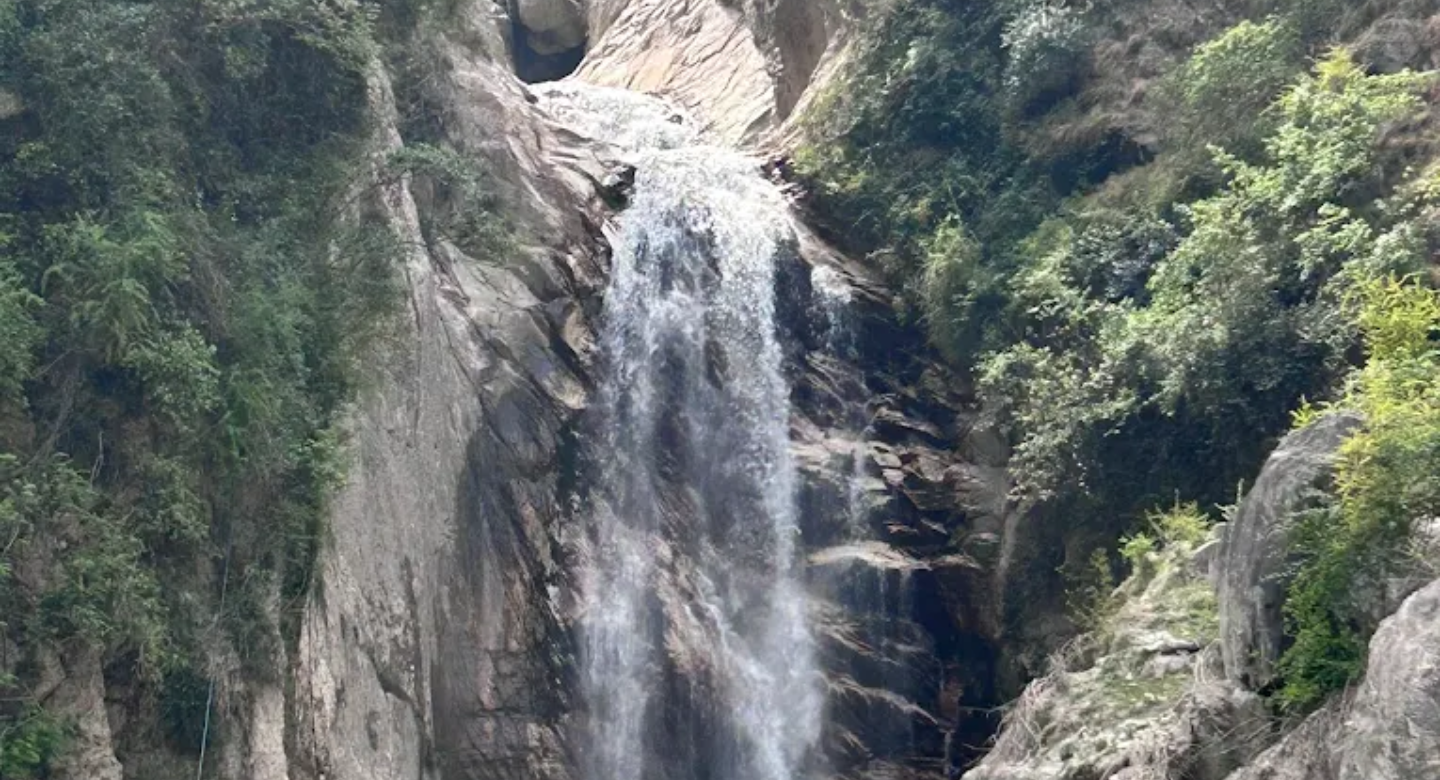
Rupi Raila Village embodies the rustic charm and authentic culture that make Sainj Valley so special. This traditional mountain settlement has preserved its ancient character while welcoming visitors with the warmth and hospitality that Himalayan communities are famous for throughout the world.
The village maintains traditional Himachali architecture, with houses built from local stone and timber using techniques passed down through generations. Narrow lanes wind between homes, leading to small courtyards where families gather in the evenings. The layout reflects centuries of adaptation to mountain conditions and community needs.
Life in Rupi Raila follows seasonal rhythms connected to agriculture and animal husbandry. Families grow apples, potatoes, and various grains on terraced fields, while also raising livestock adapted to high-altitude conditions. Traditional crafts like weaving and woodworking continue to play important roles in daily life.
The village offers authentic cultural experiences for visitors interested in learning about mountain life. Families often invite guests to share meals, participate in daily activities, and learn about local customs. These interactions provide genuine insights into sustainable living practices and community values that have sustained these communities for centuries.
15. Ancient Twin Towers
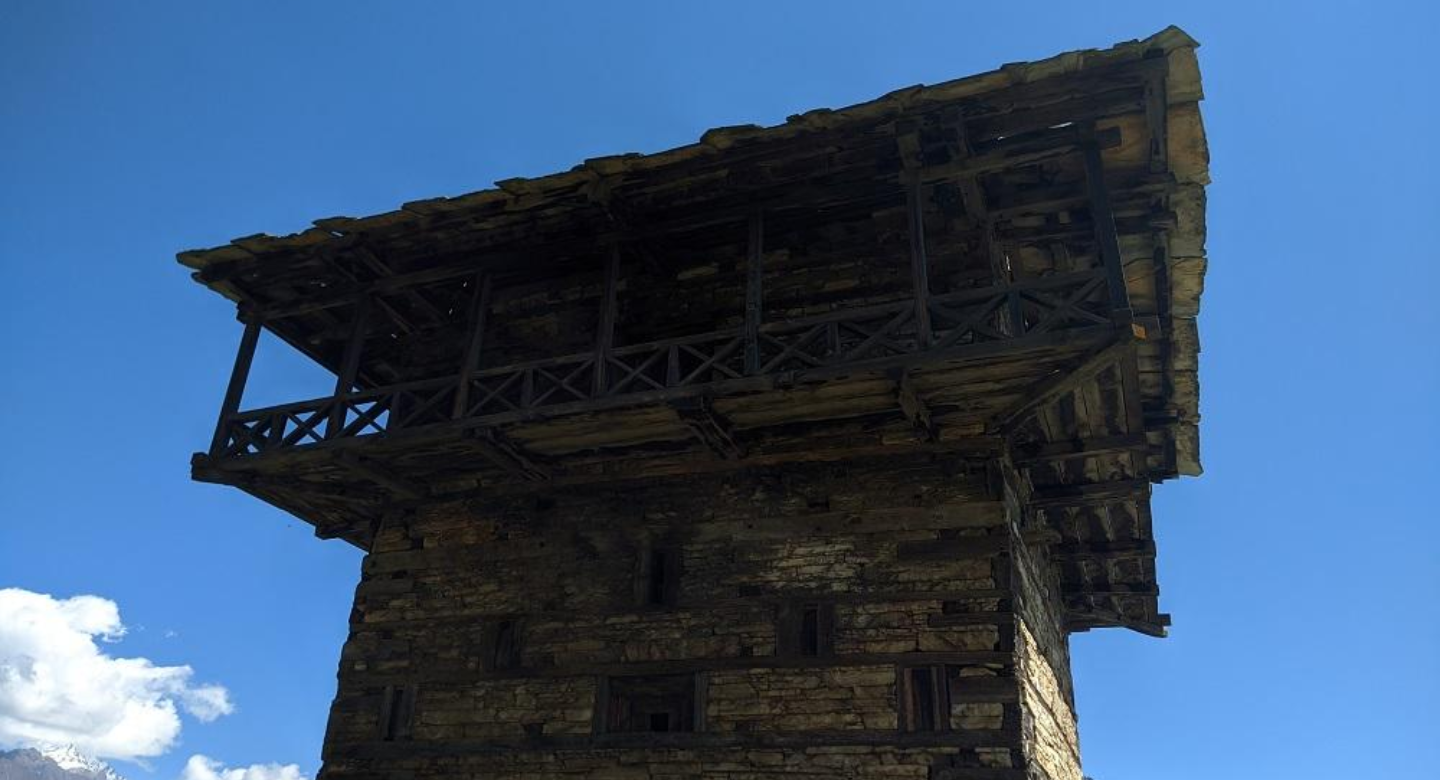
The mysterious Ancient Twin Towers near Rupi Raila Village represent one of Sainj Valley’s most intriguing historical puzzles. These remarkable stone structures have stood for centuries, though their exact origins and original purpose remain subjects of local legend and scholarly debate.
Built entirely from local stone without any mortar, the towers demonstrate incredible engineering skills from a bygone era. Despite their age and exposure to harsh mountain weather, they remain remarkably well-preserved. The precision of the stonework and the towers’ strategic positioning suggest they served important functions in ancient times.
Local legends offer various explanations for the towers’ purpose, from watchtowers used to communicate between valleys to religious structures connected to ancient spiritual practices. Some stories attribute them to medieval kingdoms, while others suggest even older origins. The mystery adds to their appeal for history enthusiasts and curious travelers.
Climbing to the top of the towers (where safely possible) provides excellent views of the surrounding valleys and peaks. The structures serve as unique vantage points for photography and landscape appreciation. The towers also make fascinating subjects for photography themselves, especially during golden hour when the ancient stones glow in the mountain light.
How to Reach Sainj Valley
Getting to Sainj Valley is an adventure in itself, but the journey rewards you with stunning mountain scenery and the gradual transition from busy roads to peaceful trails.
By Air: Bhuntar Airport in Kullu is your closest option, sitting about 60 kilometers from Sainj Valley. Regular flights connect Bhuntar with Delhi and Chandigarh throughout the year. From the airport, you can hire taxis or catch local buses, though taxis are more convenient for the winding mountain roads.
By Train: Joginder Nagar Railway Station is approximately 120 kilometers away, but it’s not the most practical option. The train connections are limited and the journey takes significantly longer than flying to Bhuntar. Most travelers skip the train and opt for air or road travel.
By Road: This is the most popular and scenic route. From Delhi, the drive takes 12-14 hours through Chandigarh and Mandi. The journey offers incredible mountain views, especially as you climb higher into the valleys. Regular bus services run from major cities to nearby towns like Aut and Banjar, from where you can catch local transport.
Driving Tips: The final stretch to Sainj Valley involves narrow, winding roads that require careful driving. Keep your fuel tank full as petrol pumps become scarce. The roads can be challenging during monsoons and may be closed during heavy snowfall in winter.
Best Time to Visit Sainj Valley

Choosing the right time for your Sainj Valley adventure can make the difference between a good trip and an absolutely magical one. Each season paints the valley in different colors and offers unique experiences.
Spring (March to May): This is arguably the most beautiful time to visit Sainj Valley. Temperatures hover between 10°C to 25°C, making it perfect for all outdoor activities. The hillsides explode with rhododendron blooms, creating stunning pink and red carpets across the landscape. All trails are accessible, and the weather is ideal for both easy walks and challenging treks.
Summer (June to August): While temperatures remain pleasant (15°C to 30°C), this period brings monsoon rains that can make travel tricky. The valley transforms into a lush green paradise, but heavy rains can trigger landslides and make trails slippery. If you don’t mind occasional downpours, the post-rain freshness and vibrant greenery are absolutely stunning.
Autumn (September to November): Another fantastic time to visit, with crystal-clear skies and crisp mountain air. Temperatures range from 5°C to 20°C, perfect for trekking and photography. The monsoon clouds clear away, revealing spectacular mountain views. Apple orchards hang heavy with fruit, and the golden autumn light makes everything look magical.
Winter (December to February): Snow blankets the valley in pristine white, creating a winter wonderland that’s breathtakingly beautiful. However, temperatures can drop well below freezing, and many high-altitude areas become inaccessible. Some villages may be cut off by snow, so this season is best for experienced winter travelers.
Best Activities by Season: Spring and autumn are perfect for trekking, photography, and exploring all areas. Summer works well for cultural immersion, provided you can handle the rain. Winter is ideal for those seeking solitude and snow-covered landscapes.
Things to Do in Sainj Valley
Sainj Valley offers activities that connect you deeply with both nature and local culture, providing experiences that transform rather than just entertain. Every activity here has an authentic quality that’s increasingly rare in our commercialized world.
Trekking and Nature Walks: The valley caters to every fitness level and experience. Easy walks through villages and meadows are perfect for families and casual hikers, while challenging treks to high-altitude destinations satisfy serious adventurers. Every trail offers stunning scenery and opportunities to spot wildlife in their natural habitats.
Birdwatching and Photography: With over 300 bird species, Sainj Valley ranks among India’s premier birdwatching destinations. You might spot colorful Himalayan species like the Western Tragopan, Monal Pheasant, and various eagles and hawks. The dramatic landscapes provide endless photography opportunities, from sweeping vistas to intimate nature details.
Temple and Village Exploration: The valley’s ancient temples tell stories of centuries-old spiritual traditions, while each village has its own unique character and customs. Spending time with local families provides insights into sustainable mountain living, traditional crafts, and community values that urban life often lacks.
Cultural Immersion and Local Cuisine: Try authentic Himachali dishes like siddu, babru, and various local preparations of dal and vegetables. Many ingredients are grown organically in village gardens using traditional methods. Participating in local festivals and ceremonies offers glimpses into rich cultural traditions that continue to thrive.
Travel Tips & Essentials
Proper preparation ensures your Sainj Valley adventure is both safe and deeply rewarding. Here’s everything you need to know before embarking on this incredible journey.
Entry Permits and Regulations: You’ll need permits to enter certain zones of the Great Himalayan National Park, especially for camping and trekking in core areas. Obtain these from forest offices in Banjar or nearby towns. Carry multiple passport-size photos and government-issued identity proof. Some areas require advance booking, particularly during peak seasons.
Money and Communication: ATMs are extremely scarce in the valley, with the last reliable one usually in Banjar town. Carry sufficient cash for your entire trip. Mobile network coverage is patchy or completely absent in many areas, which can be liberating for digital detox but challenging for emergencies.
Packing Essentials: Pack according to your planned activities and the season. Essential items include warm clothes (even summer nights can be cold), waterproof rain gear, comfortable and sturdy trekking shoes, comprehensive first aid supplies, reliable flashlight with extra batteries, and portable power bank for essential devices.
Cultural Sensitivity and Environmental Responsibility: Respect local customs and religious sites by dressing modestly and following local protocols. Ask permission before photographing people or religious ceremonies. Follow Leave No Trace principles religiously – pack out all trash, don’t disturb wildlife, stick to established trails, and camp only in designated areas.
Why You Should Visit Sainj Valley
Sainj Valley represents something increasingly precious in our fast-paced world – a place where time slows down, nature reigns supreme, and authentic experiences await those willing to venture off the beaten path. This hidden paradise offers everything that makes mountain travel truly transformational.
The valley’s pristine beauty will leave you speechless. Ancient meadows stretch toward snow-capped peaks, crystal-clear streams sing through untouched forests, and traditional villages preserve ways of life that connect us to our deepest roots. Every sunrise brings new wonders, every trail leads to unexpected discoveries, and every encounter with local people reminds us of humanity’s essential goodness.
But Sainj Valley offers much more than scenic beauty. It provides perspective on what truly matters in life. Away from digital distractions and urban pressures, you’ll find space to think clearly, breathe deeply, and reconnect with your authentic self. The warmth of local hospitality reminds us that simple human connections are life’s greatest treasures.
The valley also represents hope for sustainable tourism. By choosing destinations like Sainj Valley over crowded alternatives, you support communities that depend on tourism while helping preserve fragile mountain ecosystems. Your visit can make a genuine positive difference in people’s lives and environmental conservation.
Whether you seek adventure on challenging treks, peace in ancient temples, wildlife encounters in pristine forests, or simply the joy of discovering places few have seen, Sainj Valley delivers experiences that stay with you forever. This is travel at its most meaningful – not just seeing new places, but being transformed by them.
Come to Sainj Valley with an open heart, a sense of adventure, and respect for the incredible natural and cultural heritage you’ll encounter. Leave with memories that will inspire you for years to come and a deeper appreciation for the incredible diversity and beauty our world still holds for those willing to seek it.
Frequently Asked Questions (FAQs) on Best Places to Visit in Sainj Valley: Your Ultimate Travel Guide
Which are the easiest places to visit in Sainj Valley for beginners?
Shangarh Meadows and Barshangarh Waterfall are perfect for beginners and families. Both require minimal trekking experience and offer stunning natural beauty without challenging terrain. Deohari Village and Rupi Raila Village are also easily accessible and provide authentic cultural experiences. These destinations allow you to enjoy Sainj Valley’s charm while building confidence for more adventurous explorations.
How many days do I need to cover all the best places in Sainj Valley?
To properly explore the main attractions, plan for 7-10 days minimum. This allows 2-3 days for village exploration and temple visits, 2-3 days for moderate treks like Jiwa Nala, and additional time for challenging adventures like Raktisar Trek if you’re interested. A longer stay of 12-15 days lets you truly immerse yourself in the valley’s culture and complete all major treks without rushing.
Are there accommodation options near the best places in Sainj Valley?
Most villages offer basic guesthouses or homestay opportunities with local families. Shangarh area has several guesthouses, while villages like Deohari and Rupi Raila offer authentic homestay experiences. For treks like Raktisar and Jiwa Nala, you’ll need camping equipment. Book accommodation in advance during peak seasons, and be prepared for simple, clean facilities rather than luxury amenities.
Which places in Sainj Valley are best for photography?
Shangarh Meadows offer spectacular landscape photography, especially during sunrise and sunset. The Ancient Twin Towers provide unique architectural subjects against mountain backdrops. Pundrik Rishi Lake creates perfect reflection shots, while the traditional villages showcase authentic cultural photography. Wildlife photography opportunities abound in the Great Himalayan National Park, particularly for bird enthusiasts seeking rare Himalayan species.
Can I visit the sacred lakes and temples without a guide?
While temples like Shangchul Mahadev and Devi Navdurga are easily accessible without guides, remote destinations like Pundrik Rishi Lake benefit from local guidance for safety and navigation. The Great Himalayan National Park requires permits and often mandates guides for certain areas. Local guides also enrich your experience by sharing cultural stories, identifying wildlife, and ensuring you follow proper etiquette at religious sites.
What’s the difficulty level of treks to places like Sari Kanda and Raktisar?
Sari Kanda is a challenging day hike requiring good fitness but manageable for experienced hikers. Raktisar Trek is genuinely difficult, demanding excellent fitness, proper gear, and multi-day camping experience. Both require early starts and weather awareness. If you’re new to high-altitude trekking, build experience with easier trails first. Always inform locals about your trekking plans and carry emergency supplies.
Are the remote villages like Upper Neahi and Shenshar accessible by vehicle?
Upper Neahi requires a short hike from the nearest motorable road, while Shenshar involves more walking through mountain paths. Most remote villages aren’t directly accessible by car, which preserves their authentic character. Local transport or hired jeeps can get you to nearby points, but expect to walk the final stretches. This limited access is actually part of their charm and keeps them unspoiled.
What permits do I need for visiting places in the Great Himalayan National Park?
Entry permits are required for most GHNP areas, including some popular spots near Sainj Valley. Obtain permits from forest offices in Banjar or nearby towns, carrying passport photos and ID proof. Camping permits cost extra and have limited availability. Some areas require advance booking, especially during peak season. Permits help fund conservation efforts, so the fees support protecting this incredible wilderness.
Which places offer the best cultural experiences with local communities?
Deohari Village and Rupi Raila Village provide the most authentic cultural interactions, with families often inviting visitors for meals and sharing daily life activities. Upper Neahi offers insights into traditional farming and self-sufficient living. Temple visits during local festivals at places like Devi Navdurga Temple showcase vibrant cultural celebrations. Homestays in these villages offer immersive experiences in genuine mountain hospitality and customs.
What’s the best way to plan a route covering multiple places in Sainj Valley?
Start with easily accessible places like Shangarh Meadows and nearby temples to acclimatize. Group villages by proximity – visit Deohari and its temple together, then Shenshar and Manu Rishi Temple. Plan challenging treks like Raktisar for when you’re fully acclimatized and weather is stable. End with relaxing spots like Barshangarh Waterfall. Allow buffer days for weather delays and spontaneous discoveries that make Sainj Valley special.


